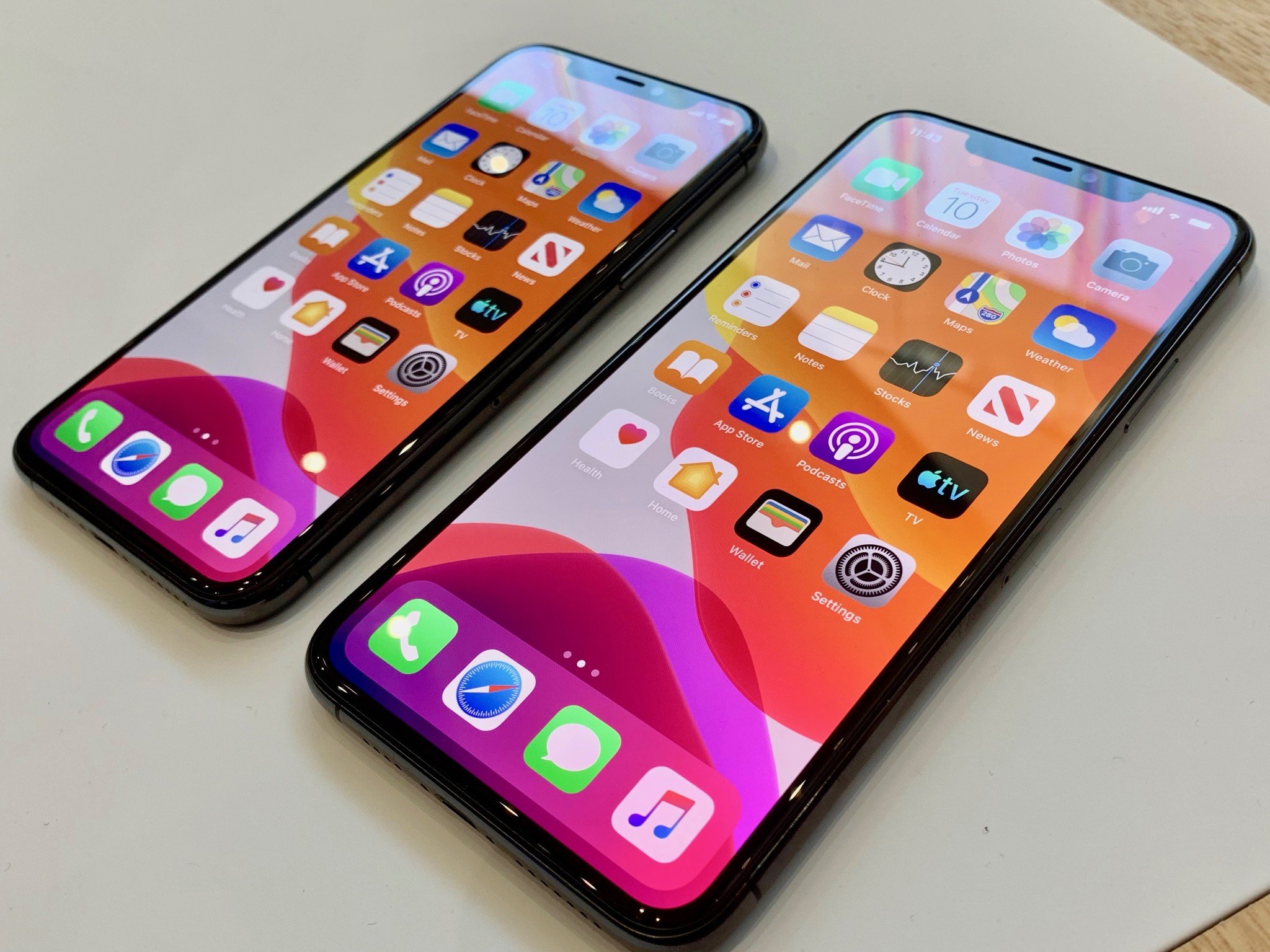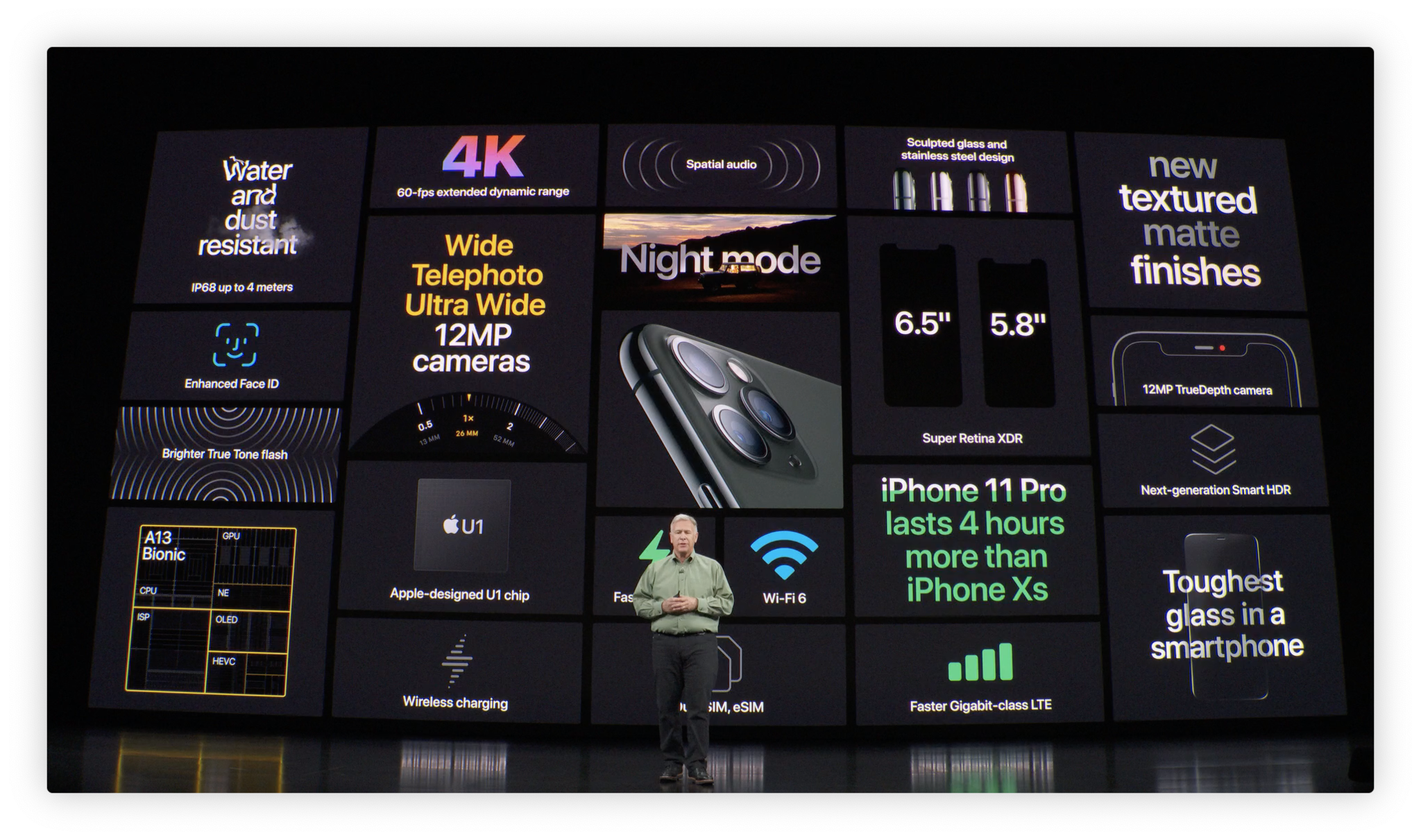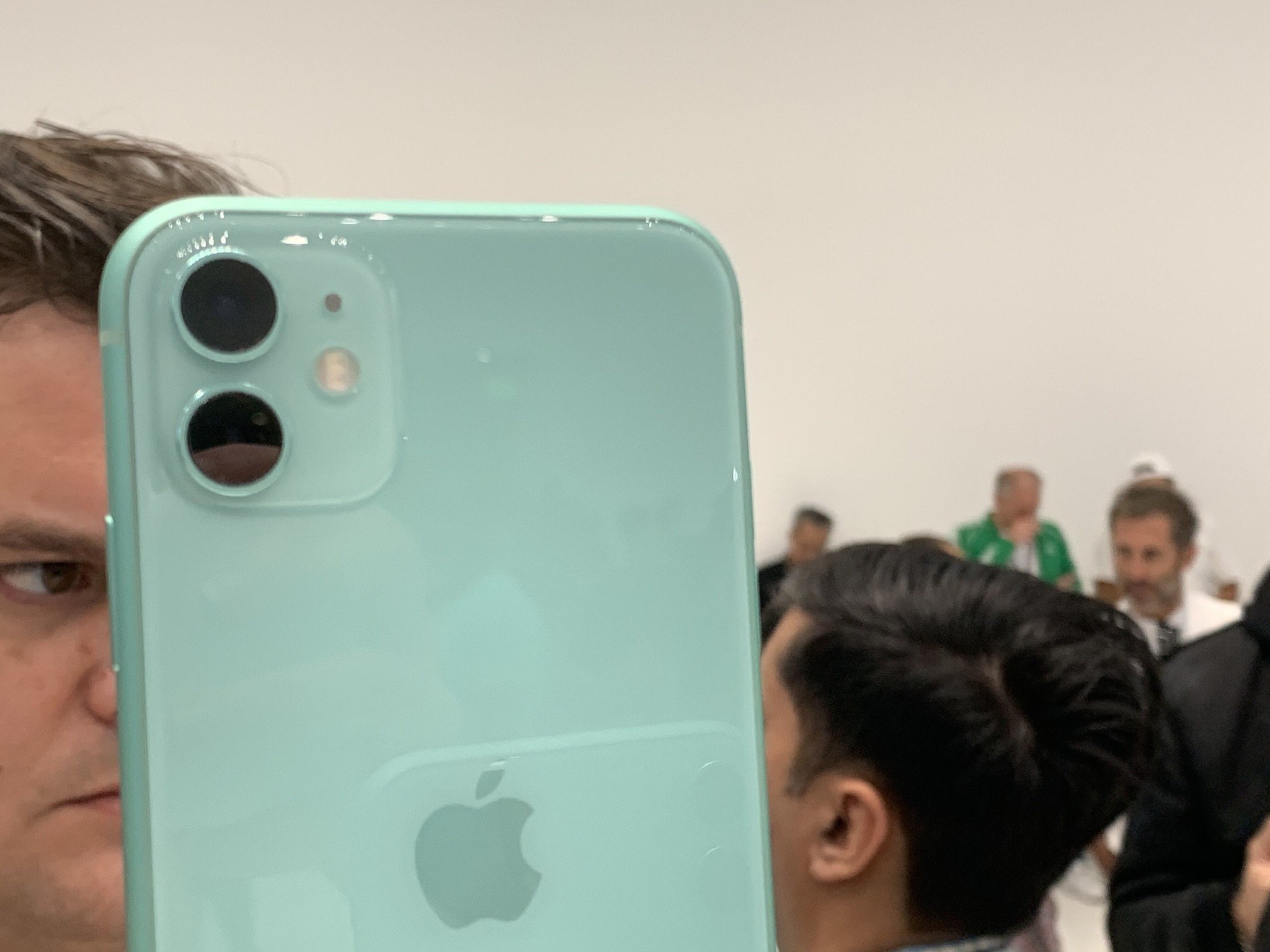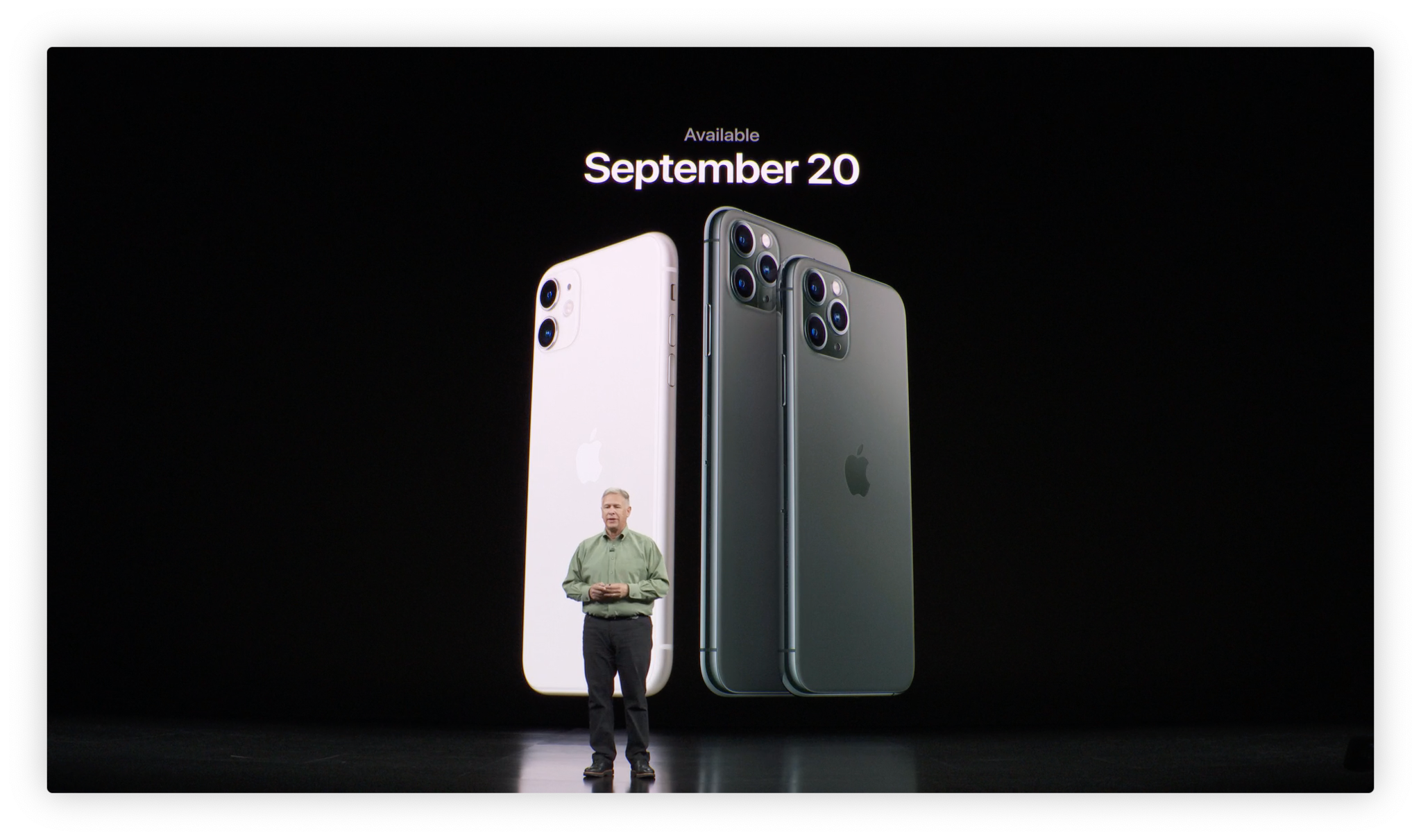iPhone 11 and iPhone 11 Pro: Everything you need to know

Apple has just announced three new iPhones coming later this month: iPhone 11, iPhone 11 Pro, and iPhone 11 Pro Max. Here's everything you need to know about these brand new iPhones.
Screen sizes and display
The iPhone 11 features a 6.1-inch Liquid Retina LCD Display , like its predecessor. It has wide color support and True Tone for a natural viewing experience.
The iPhone 11 Pro has a 5.8-inch OLED Super Retina XDR Display, with the Max having a 6.5-inch Super Retina XDR display. This is the "brightest display" yet on the iPhone. The custom designed OLED of the Super Retina XDR display provides an HDR experience when watching videos and has 1,200 nits of brightness. It has support for wide-color gamut and has True Tone display. There's a 2 million-to-one contrast ratio for true blacks, and the entire display is much more power efficient.
Apple has gotten rid of 3D Touch in favor of Haptic Touch for all iPhone 11 models.
Bigger batteries

The new iPhone 11 will have all-day battery life, but with one more hour than its predecessor.
The iPhone 11 Pro will have four more hours than the iPhone XS, and the iPhone 11 Pro Max has five more hours than its predecessor.
The new iPhone Pros will also come with an 18W fast-charge power adapter, which is a nice upgrade from previous generations.
iMore offers spot-on advice and guidance from our team of experts, with decades of Apple device experience to lean on. Learn more with iMore!
The Apple logo is now centered on the back of the device, to serve as a visual indicator of where to place your phone down on a wireless charging mat.
Colors and design

The iPhone 11 will come in the following colors: Purple, Green, Yellow, White, Black, and (PRODUCT)Red. The iPhone 11 has a back design that is precision milled and sculpted from a single piece of glass, which is also the toughest glass yet. There is an IP68 water resistance rating for two meters for up to 30 minutes.
iPhone 11 Pro and Pro Max comes in Midnight Green, Space Gray, Silver, and Gold. The Pro models have a textured matte glass back and a polished stainless steel band. Apple has used the toughest glass ever for these Pro iPhones and it has an IP68 water resistance rating up to four meters for 30 minutes.
New A13 Bionic chip
The new iPhones are powered with the latest silicon, and that's the new A13 chip that succeeds the previous A12 Bionic chip that was in the 2018 models. They're calling it the "fastest CPU and GPU in a smartphone," as it is 20 percent faster than the A12. The A13 Bionic is built for machine learning, and has faster Neural Engine for real-time photo and video analysis. The new Machine Learning Accelerators make it possible for the CPU to deliver one trillion operations per second.
As part of the A13 configuration, there is a new U1 sensor, also codenamed R1 or Rose. This sensor will help give the iPhone 11 a better sense of its location in 3D space. Previously, the M-series motion coprocessor takes data from a compass, accelerometer, microphones, barometer, and gyroscope. However, the new U1 sensor will include inertial measurement unit (IMU), Bluetooth 5.1 features, ultra-wideband (UWB) and camera (including motion capture and optical tracking) sensor data.
This chip also makes Face ID 30 percent faster and will support multiple angles for unlocking.
Cameras

The iPhone 11 will come with a new dual lens system. It includes new sensors and a new ultra wide angle lens that provides a 120 degree field of view. When shooting with the new wide angle lens, you'll see the extra frame on the outside of the shot, and you can quickly switch to Ultra Wide for optical zoom out.

With the iPhone 11 Pro, you're getting a triple lens system with Wide, Ultra Wide, and Telephoto lenses. It allows a 4x optical zoom range. Each camera is also capable of recording in 4K with extended dynamic range and cinematic video stabilization. There is also Audio Zoom that matches the audio to the video framing for dynamic sound.

All iPhone 11 models have Deep Fusion, which utilizes the Neural Engine in the A13 Bionic chip to create a new image processing system. It uses advanced machine learning to do pixel-by-pixel processing of photos, optimizing every bit of texture, details, and noise in the photo. The Smart HDR also makes use of machine learning to capture more natural-looking images with beautiful highlight and shadow detail on subject and background.
There will also be an automatic Night Mode for both the iPhone 11 and Pro lines that turns on when it's dark enough, illuminating the entire scene. It does this through advanced adaptive bracketing. The new camera interface allows users to see the areas outside of the frame, and quickly switch to the Ultra Wide if they want to capture the entire scene. There is also a quicker way to start recording video by just holding the capture button and sliding it left.
The front-facing TrueDepth camera will now be 12MP wide angle, and works in landscape mode for wider group shots. Slow motion video is now also possible on the front-facing camera, so you can create "Slofies." The TrueDepth camera records 4K video at 60fps or slow-mo at 120fps.
Audio
All iPhone 11 models will support spatial audio for an immersive listening experience. Dolby Atmos will be supported on all iPhone 11 devices.
Wireless connectivity
The iPhone 11 supports Gigabit-class LTE and Wi-Fi 6, with the Pro line supporting speeds up to 1.86Gbps. You'll be able to use iPhone 11 and iPhone 11 Pro with Dual SIM and eSIM.
Still charges via Lightning
The new iPhones will still use Lightning, instead of USB-C. It is more likely that USB-C will be available starting with the 2020 iPhones.
When will the new iPhones be available?

Pre-orders for the new iPhones will become available on Sept. 13 at 5 AM PST. The devices will be available on Sept. 20.
How much are the new iPhones?
The iPhone 11 will start at $699. iPhone 11 Pro starts at $999 and Pro Max will be $1099.

Christine Romero-Chan was formerly a Senior Editor for iMore. She has been writing about technology, specifically Apple, for over a decade at a variety of websites. She is currently part of the Digital Trends team, and has been using Apple’s smartphone since the original iPhone back in 2007. While her main speciality is the iPhone, she also covers Apple Watch, iPad, and Mac when needed.
When she isn’t writing about Apple, Christine can often be found at Disneyland in Anaheim, California, as she is a passholder and obsessed with all things Disney, especially Star Wars. Christine also enjoys coffee, food, photography, mechanical keyboards, and spending as much time with her new daughter as possible.

